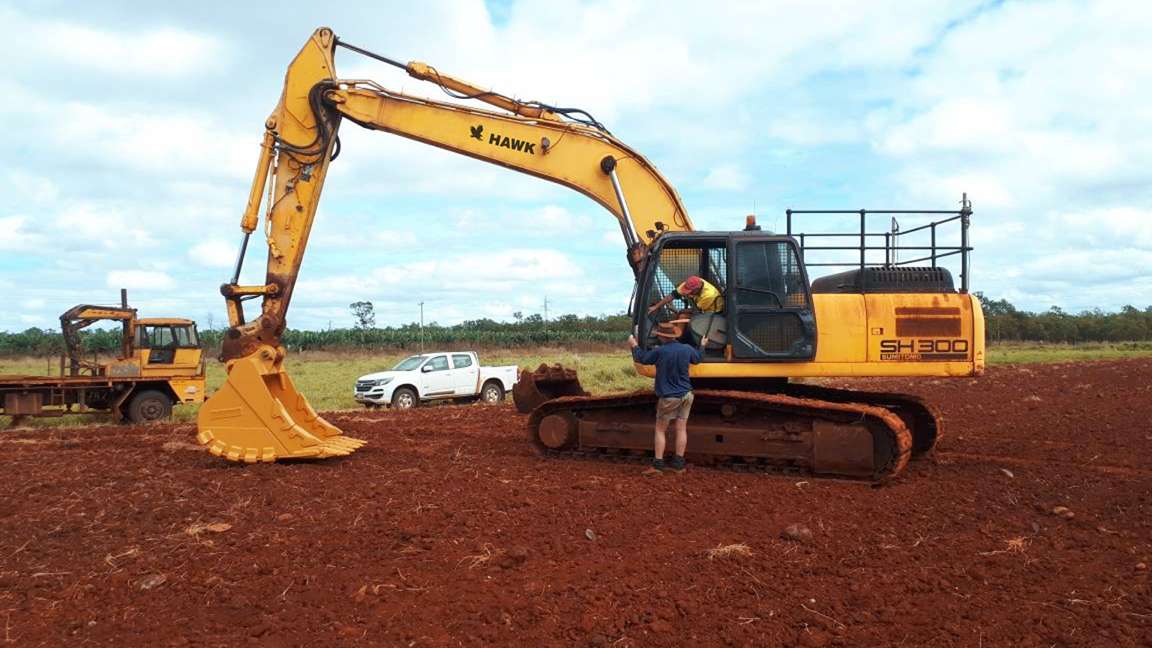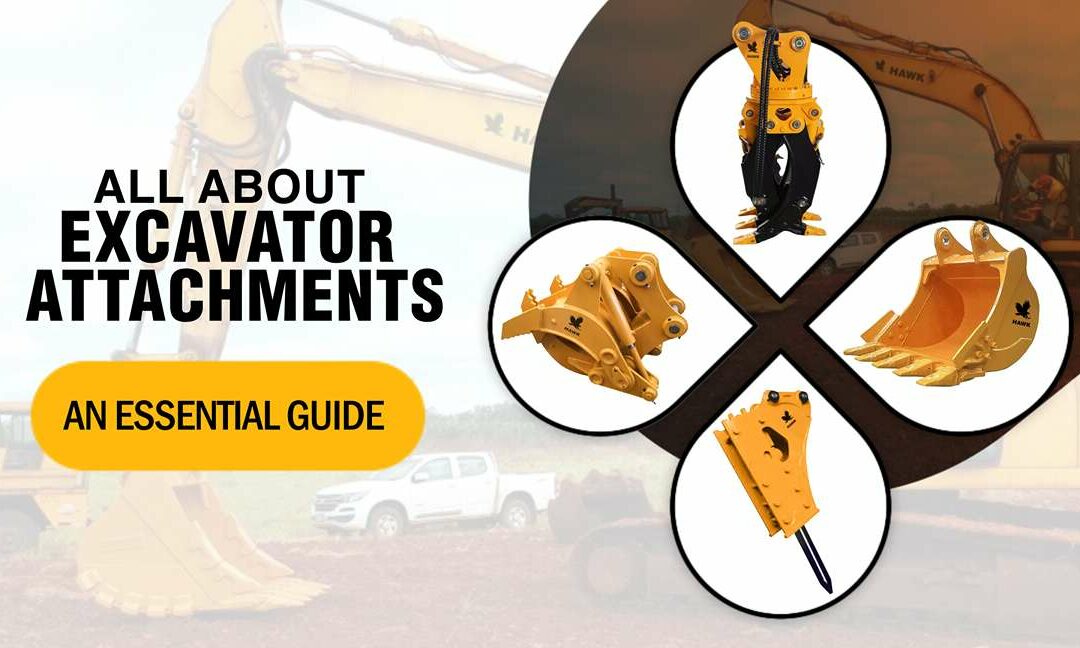Excavator attachments are transformative tools that enhance the versatility and functionality of excavators across various industries. From construction to demolition, excavation to landscaping, these reliable attachments are crucial in maximizing efficiency and productivity on job sites. In this comprehensive guide, we will delve into the world of excavator attachments, exploring their types, applications, maintenance tips, and future trends.
Exploring the World of Excavator Attachments
Excavator attachments come in various forms, each created to perform specific tasks precisely and efficiently. The range of attachments available, from buckets and hammers to grapples and thumbs, ensures contractors can easily tackle various projects. Understanding the importance of using these accessories is vital to unlocking their full potential and optimizing performance.
Overview of Excavator Attachments
Excavator attachments serve as extensions of the machine, enabling operators to accomplish tasks that would otherwise be impractical or impossible. Whether digging trenches with a bucket, breaking concrete, lifting heavy loads, or clearing debris, there’s an attachment suited to the task. By harnessing the power of this equipment, excavators can become multi-functional tools capable of efficiently handling various tasks.
Importance of Using Attachments for Excavators
Attachments significantly enhance excavators’ versatility and capacity, allowing operators to perform various tasks without requiring multiple machines. This saves time and labor costs and minimizes the environmental impact by reducing the number of machines required on-site.
Types of Excavator Attachments
Excavator attachments can be broadly categorized by specific type, each serving a distinct purpose. These include buckets, hammers, thumbs, grapples, augers, and compactors. The choice of attachment depends on the project’s specific requirements, such as the type of material being handled, the depth and width of excavation, and the desired level of precision.

Choosing the Right Excavator Attachment for Your Project
Excavator Hammer Attachment (Concrete Breakers): Breaking Ground with Precision
Excavator hammer attachments are potent tools for breaking through rigid materials such as rock, concrete, and asphalt. Their robust construction and high-impact force make them ideal for demolition, excavation, and road construction projects.
Introduction to Excavator Hammer Attachments
Excavator hammer attachments, also known as concrete breakers or hydraulic breaker hammers, utilize hydraulic power to deliver high-impact blows to the surface being worked on. They consist of a hammer mechanism in a steel casing attached to the excavator’s arm or boom. When activated, the hammer repeatedly strikes the surface, breaking it into smaller fragments that can be easily removed or disposed of.
Applications and Uses
Concrete breakers are commonly used in construction, demolition, quarrying, and mining industry applications. They are particularly reliable for jobs like breaking up concrete foundations, asphalt roads, rock outcrops, and other hard materials that are difficult to remove using traditional methods. With the ability to deliver precise and controlled blows, hammer attachments allow operators to work with greater efficiency and accuracy, minimizing the need for manual labor and reducing project timelines.
Advantages of Using Excavator Hammer Attachments
These hydraulic concrete breakers are nothing if not versatile. They can be used for various tough jobs, from breaking concrete to digging piles and posts into the ground. This versatility makes them indispensable tools for contractors and construction companies working on diverse projects. Additionally, hammer attachments are highly efficient, allowing operators to complete work quickly and with minimal effort. This saves hours and labor costs and reduces environmental impact by minimizing heavy machinery and equipment need.
Tips for Proper Maintenance
Proper maintenance ensures hammer attachments’ optimal performance and longevity. Regular inspections, lubrication, and cleaning are necessary to prevent wear and tear and extend the attachment’s lifespan. Additionally, operators should follow manufacturer recommendations for machine servicing and repair to avoid costly downtime and repairs. By implementing a proactive maintenance plan, operators can maximize the efficiency and reliability of their hammer accessories, ensuring they perform at their best when needed.
Skid Steer Excavator Attachment: Versatility Redefined
Skid steer excavator attachments are innovative tools that expand the capabilities of skid steer loaders, enabling them to perform a wide range of duties traditionally reserved for larger equipment. From digging and trenching to lifting and hauling, these accessories offer unmatched versatility and efficiency.
Understanding Skid Steer Excavator Attachments
Skid steer attachments are designed to be compatible with skid steer loaders, transforming them into powerful and versatile machines capable of efficiently completing work. They attach to the loader’s arms or boom using a quick-attach system, allowing for rapid installation and removal as needed. With the ability to switch between different accessories quickly, operators can maximize productivity and adapt to changing requirements on the fly.
Features and Benefits
Skid steer excavator attachments come in various configurations, each tailored to specific tasks and applications. These include buckets, augers, trenchers, grapples, and hydraulic breakers. The choice of attachment depends on the nature of the project, such as the type of material being handled, the depth and width of excavation, and the desired level of precision. By selecting the proper attachment for the task, operators can optimize performance and efficiency, reducing the need for manual labor and increasing overall productivity.
Compatible Excavator Models
Skid steer excavator attachments are designed to be compatible with various skid steer loader models, making them a versatile and cost-effective solution for contractors and construction companies. Whether it’s a compact mini-loader or a large industrial-grade machine, there’s an attachment available to suit every need and budget. Additionally, many manufacturers offer custom attachments tailored to specific loader models, ensuring a perfect fit and optimal performance.
Key Considerations When Choosing a Skid Steer Attachment
Several factors should be considered when selecting a skid steer excavator attachment to ensure compatibility and suitability for the intended application. These include the attachment’s type and size, the loader’s hydraulic capacity, and any special features or requirements unique to the job site. By carefully evaluating these factors and consulting with equipment experts, operators can make informed decisions and choose the proper attachment for their needs.

Choosing the Right Excavator Attachment for Your Project
Selecting the proper attachments for excavators is crucial for maximizing efficiency and productivity on the job site. By considering various factors such as project requirements, excavator specifications, and cost considerations, operators can choose the most suitable attachment for their needs, ensuring optimal performance and results.
Factors to Consider Before Selecting an Attachment
Before selecting an excavator attachment, operators should carefully assess their project requirements and determine the tasks needed. This includes considering the type of material being handled, the depth and width of excavation, and any site-specific challenges or constraints. By understanding these factors upfront, operators can narrow their options and find the attachment that best meets their needs.
Matching Attachment to Excavator Specifications
It’s essential to ensure that the chosen equipment is compatible with the specifications of the excavator on which it will be mounted. This includes considering sizes, weight capacity, hydraulic flow rate, and mounting configuration. Choosing an attachment that is too large or too small for the excavator can result in inefficiency and potential damage to both the attachment and the machine. By matching the attachment sizes to the excavator’s specifications, operators can ensure great performance, save money and provide safety on the job site.
Assessing Project Requirements
Depending on the nature of the work being performed, different projects may require different attachments for excavators. For example, a demolition or excavation project may require a hydraulic hammer attachment, while a landscaping, mulching or grading project may require buckets, rakes or grading blades. Even if one is looking to mulch trees, a variety of equipment approaches can be taken. By carefully assessing project requirements and considering the tasks that need to be completed, customers can choose the most suitable accessory for the job, maximizing efficiency and productivity.
Cost Considerations and ROI
Cost is another essential factor to consider when selecting an excavator attachment. While high-quality brands’ attachments may come with a higher upfront cost, they often offer better performance, durability, and reliability, resulting in long-term cost savings and a higher return on investment (ROI). Operators should carefully check the attachment’s upfront cost against its expected lifespan and performance to determine its overall value. Additionally, it’s essential to consider any additional costs associated with installation, maintenance, and repair when calculating the total cost of ownership.
Maintenance and Safety Tips for Excavator Attachments
Proper maintenance and safety precautions ensure excavator attachments‘ safe and efficient operation. By following a few simple tips and guidelines, operators can maximize the lifespan of their attachments and minimize the risk of accidents and injuries on the job site.
Importance of Regular Maintenance
Regular maintenance is essential for keeping these helpful tools in optimal condition and preventing premature wear and tear over the years. This includes routine inspections, lubrication, and cleaning to remove dirt, debris, and other contaminants that can cause damage or reduce performance. Additionally, operators should follow manufacturer recommendations for servicing and repair to address issues promptly and prevent costly downtime.
Safety Precautions When Operating Attachments
Safety should always be the top priority when operating any heavy machinery. Operators should receive proper training and certification before using the equipment and familiarize themselves with the manufacturer’s specific safety guidelines and procedures. This includes wearing appropriate personal protective equipment (PPE), such as hard hats, gloves, and safety glasses, and following proper operating procedures to minimize the risk of accidents and injuries.
Storage and Cleaning Guidelines
Proper storage and cleaning are essential for maintaining the integrity and performance of this equipment. Items like rakes and buckets should be stored in a clean, dry, and secure location when not in use to prevent damage from exposure to the elements or theft. Additionally, operators should regularly clean these pieces after use to remove dirt, debris, and other contaminants that can cause corrosion or reduce performance. This includes flushing hydraulic lines, greasing moving parts, and inspecting for any signs of wear or damage.
Troubleshooting Common Issues
Despite proper maintenance and care, excavator attachments may encounter occasional issues or malfunctions that require troubleshooting and repair. Common problems include hydraulic leaks, worn or damaged components, and poor performance. Operators should be familiar with the symptoms of these issues and know how to address them promptly to prevent further damage or downtime. This may involve consulting with equipment experts during the equipment sale, performing diagnostic tests, and implementing appropriate repair or replacement measures.

Skid Steer Excavator Attachment Versatility Redefined
Future Trends in Excavator Attachment Technology
Excavator attachment technology is continuously evolving and driven by design, automation, and sustainability innovations. Manufacturers are developing advanced attachments with enhanced capabilities and features as the construction industry seeks more efficient and environmentally friendly solutions.
Innovations in Excavator Attachment Design
Recent innovations in design focus on improving performance, durability, and versatility. This includes developing lightweight materials, advanced hydraulic systems, and ergonomic features that enhance operator comfort and efficiency. Additionally, industry manufacturers are incorporating intelligent technologies such as sensors and onboard diagnostics to monitor performance and detect real-time issues, allowing for proactive maintenance and repair.
Automation and Remote Control Features
Automation and remote control features are becoming increasingly common in excavator attachments, allowing greater precision, efficiency, and safety on the job site. Advanced attachments equipped with GPS, cameras, and telematics systems can be operated remotely or programmed to perform specific tasks autonomously, reducing the need for manual intervention and increasing productivity. Additionally, remote control capabilities enable operators to control attachments from a safe distance, minimizing the risk of accidents and injuries in hazardous or inaccessible environments.
Environmental Considerations and Sustainability Efforts
Environmental considerations and sustainability efforts drive innovation in excavator attachment technology, with manufacturers focusing on reducing emissions, energy consumption, and environmental impact. This includes the development of electric-powered attachments, hybrid systems, and fuel-efficient designs that minimize carbon footprint and resource consumption. Additionally, manufacturers are exploring alternative materials and manufacturing processes that are more environmentally friendly and sustainable, such as recycled plastics and bio-based composites.
Conclusion
Excavator attachments are essential tools that enhance excavators’ versatility, efficiency, and productivity across various industries. From breaking ground with precision to redefining versatility in skid steer loaders, these attachments are crucial in maximizing performance and results on the job site. By choosing the right attachments for excavators, following proper maintenance and safety procedures, and embracing future trends in technology and sustainability, operators can unlock the full potential of excavator attachments like breaker hammers and clamshell buckets and achieve success in their projects.

